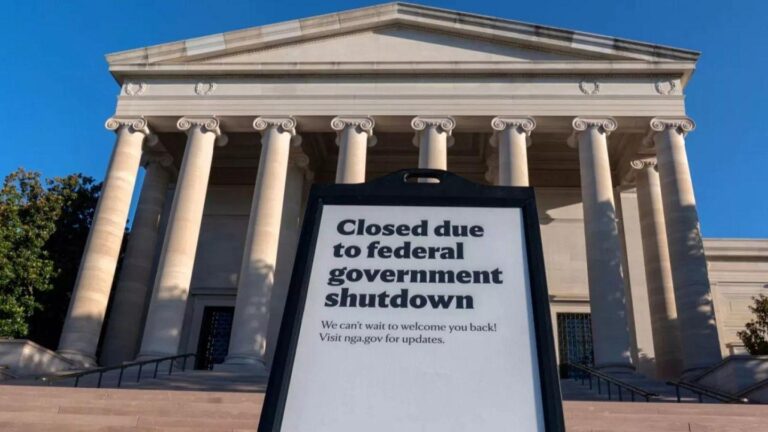As the federal government faces a shutdown, questions arise about which employees will continue to receive pay and who will face unpaid furloughs. The looming closure affects thousands of workers, but not all government personnel are impacted equally. This article breaks down the distinctions between funded and unpaid employees during a shutdown, providing clarity on who gets paid, who doesn’t, and the broader implications for federal operations and services.
Who Remains On The Payroll When The Federal Government Shuts Down
During a federal government shutdown, not all federal employees face the same fate regarding their paychecks. Essential personnel, often referred to as “excepted employees,” remain on the job and continue to receive their salaries, even if Congress has not approved funding. This group typically includes federal law enforcement officers, air traffic controllers, military personnel, and employees responsible for national security and public safety. Their work is considered critical to maintaining government operations that protect lives and property, so their pay is legally guaranteed despite funding disruptions.
On the other hand, non-essential or furloughed workers are sent home without pay during the shutdown. These employees cannot perform their duties because their agencies lack funding, and they do not receive paychecks until the government reopens. Some roles affected include administrative staff, park rangers at national parks, and many support personnel. Here is a simplified breakdown of who stays paid and who does not during a federal shutdown:
| Employee Status | Examples | Pay During Shutdown |
|---|---|---|
| Excepted Employees | Military, TSA officers, Air traffic controllers | Paid on schedule |
| Furloughed Employees | National Park staff, administrative personnel | No pay until shutdown ends |
Impact On Federal Employees and Contractors During A Shutdown
When federal operations halt due to a government shutdown, thousands of federal employees face immediate uncertainty. Those deemed “essential” or “excepted” continue working without pay, keeping critical services operational, though their paychecks are delayed until after the shutdown ends. On the other hand, non-essential employees are placed on furlough, prohibited from working and without income, creating financial strain and widespread concern within the federal workforce.
Contractors working with the government experience a harsher reality, as most are not protected under shutdown legislation and typically do not receive back pay once funding resumes. Key points include:
- Essential federal employees: Work without pay during shutdown, paid retroactively later.
- Non-essential employees: Furloughed and unpaid until funding is restored.
- Contractors: Often face work stoppage and possible unpaid periods with no guaranteed back pay.
| Category | Status During Shutdown | Pay Impact |
|---|---|---|
| Essential Employees | Work expected | Paid retroactively |
| Non-Essential Employees | Furloughed | No immediate pay |
| Contractors | Work paused | Usually no pay |
How Unpaid Workers Can Manage Financial Strain Amid Pay Freezes
Unpaid federal employees facing pay freezes are urged to explore immediate financial relief options to alleviate the pressure. Prioritizing essential expenses such as rent, utilities, and groceries can help stretch limited resources. Employers and community organizations often provide emergency assistance programs specially designed for government workers caught in shutdowns.
In addition to personal budgeting, workers can benefit from financial tools and resources, including:
- Accessing hardship loans or credit lines with low interest
- Utilizing food banks and public assistance programs
- Negotiating payment deferrals with landlords and creditors
- Seeking support through union or employee assistance programs
| Financial Strategy | Benefit |
|---|---|
| Emergency Relief Funds | Short-term cash flow support |
| Expense Prioritization | Avoids defaulting on critical bills |
| Credit Negotiation | Reduces financial penalties |
| Community Support Networks | Access to food and housing help |
Strategies For Navigating Economic Uncertainty During Government Funding Gaps
During times when federal funding ceases, individuals and organizations relying on government support must swiftly adapt. Prioritizing financial liquidity is crucial; maintaining a robust emergency fund allows for covering essential expenses without disruption. Businesses and workers should also explore alternative revenue streams or temporary contract work to bridge income gaps during prolonged shutdowns. Keeping communication channels open with creditors and service providers can help negotiate payment terms, avoiding penalties or service interruptions in the interim.
Practical steps to navigate these interruptions include:
- Reviewing and adjusting budgets to focus on critical expenses
- Seeking community resources or grants that remain accessible despite federal shutdowns
- Engaging with professional networks for timely updates and support options
- Understanding which government employees are furloughed to gauge the availability of services
| Group | Payment Status | Recommended Action |
|---|---|---|
| Essential Federal Employees | Paid | Maintain usual financial planning |
| Furloughed Employees | Unpaid initially | Utilize savings; seek temporary work |
| Contract Workers | Varies | Confirm contract terms; diversify income |
Insights and Conclusions
As the complexities of a federal government shutdown unfold, understanding who continues to receive pay—and who faces financial uncertainty—remains crucial. This breakdown sheds light on the often-confusing protocols that determine federal employee compensation in these challenging times. Staying informed allows citizens to grasp the broader impacts on government operations and the individuals who serve the nation.




